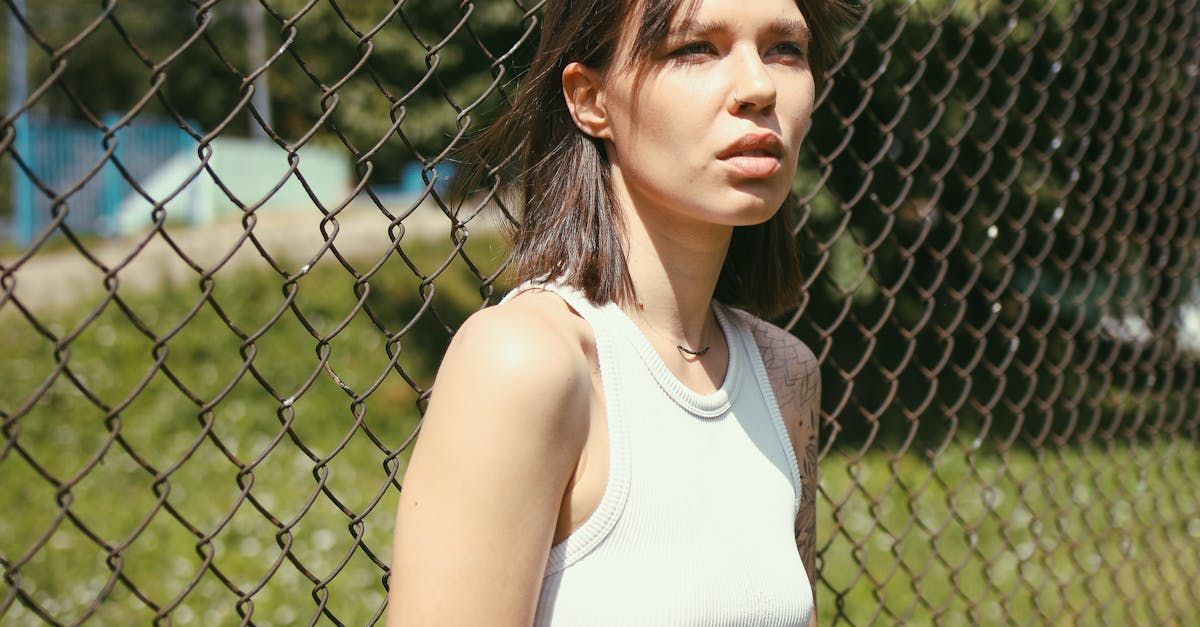Selecting the Right Chain Wire Fence: A Buyer Guide
How to choose the right chain wire fence for your upcoming fencing project in 2024?
Chain-wire fencing is standard everywhere—industrial projects, rural areas, homes, businesses, and farms. There are many different types of chan wire fencing to choose from.

This guide answers common questions about chain wire products and helps you determine your needs. It's important to keep in mind - Chain wire fencing products in Australia should comply with the AS2343 standard .
Here is the important aspects of Wire Fencing that you should be aware of.
Roll Height
Chain wire mesh comes in a variety of different heights. You can get it as short as 600mm or as tall as 3600mm. But if you need a tall one, some stores might need one, and you must pre-order. The fence height depends on its purpose.
Chain wire fences typically range from 1200mm to 1800mm tall for homes. Security fencing often requires taller barriers, usually between 1800mm and 2700mm high. Tennis courts need even higher fences, generally 3000mm or 3600mm tall.
Selvedge
The edges of a chain-wire fence are called the selvedge. This is where we tidy up the wire ends at the top and bottom, making the Fence look neat and robust.
The top and bottom of chain wire mesh can come in a few different styles. You'llYou'llly see three main types:
- Knuckle on both ends
- Knuckle on one end, barb on the other
- Barb, on both ends
Most of the time, you won't need barbs on both ends. That's because suppliers typically stock the first two options. If you want barbs on both ends, you'll have to order them in a particular order.
The knuckle/barb combo is popular for commercial and security fences. Those barbs make the Fence harder to climb and less inviting to intruders. But it's better to go with knuckles on both ends for home use, especially if you have kids or pets running around.
Wire Material
Chain wire mesh is available in galvanised, PVC-covered, and stainless steel. Galvanised is the cheapest option, PVC costs 30-50% more, and stainless steel is the priciest option.
PVC-covered chain wire lasts longer because it fights rust better. It's perfect for coastal areas where salty air can eat away at regular wire. People also like how it looks, especially black mesh. It's easier to see through than the shiny galvanised stuff. The PVC coating acts like a shield, protecting the metal wire and making it last longer.
Wire Thickness and Coating
Most chain link fences use thick wire coated with zinc through a hot-dip process to help protect it from rust. If you need something more rigid, you can get 3.15mm wire for the 50mm diamond mesh. This thicker wire is often used for businesses or in places with harsh weather, like near the beach. It's bIt's to last longer in harsh conditions.
The zinc coating is essential - it keeps the Fence from rusting too quickly. Thicker wire with more zinc generally means a longer-lasting fence.
Posts and Rails
You can chuck chain wire on timber posts with staples, but the usual go is Galvo steel pipes for posts. You tie the chain wire to these with galva or plastic-coated wire.
These posts come in different sizes, from skinny 27mm to fat 114mm. They can be up to 6.5 meters long, but you'll find ready-to-use lengths at the shop. You'll usually insert 60 them into the ground, but corner and gate posts must go deeper.
For corners, ends, and gates, you want the thicker posts - 50mm is common, but for big security gates, you might go up to 80mm. Space out the middle posts evenly, no more than 3.3 metres apart. These are usually 48mm thick.
For the rails that go across and the braces, you can use 32mm to 43mm pipes.
Posts and Rails
You can use timber posts for chain wire fences, but steel posts are better. These are usually made of galvanised steel pipe. You tie the chain wire to the posts with thin wire.
Steel posts are best for chain-wire fences. They rely on galvanised steel pipes called NB (nominal bore) pipes. Common sizes are:
- Corner and gate posts: 50NB or 80NB for big gates
- Posts in between: 32NB to 40NB (48mm outside diameter)
- Rails and braces: 25NB to 32NB (43mm outside diameter)
- NB sizes go from 20NB (27mm outside) to 100NB (114mm outside). Posts can be up to 6.5 metres long.
- Space posts no more than 3.3 metres apart. Sink them about 60 cm into the ground, deeper for corner and gate posts.
You can get posts in different colours to match your chain wire. Coloured posts cost more. Use top and bottom rails or strong wire along the Fence to keep it tight.
Gates
Most fences need a way to go in and out. You can get chain wire gates from fencing shops, which come in different sizes:
- Width: 1 to 6 metres
- Height: usually 1 to 1.8 metres, but you can get custom sizes
The wire mesh on gates can have small or big diamonds (25mm, 50mm, or 60mm). You can choose between plain galvanised or plastic-coated wire.
Gate frames come in different colours, too. Hinges and latches can be fitted to timber or steel posts. For extra security, some gates have barbed wire on top.
Diamond Size
When picking chain wire, consider the diamond size, too. Most people choose 60mm or 50mm diamonds because they look great and are suitable for home fences. You can also get smaller ones at 25mm or bigger ones at 100mm if needed.
The 60mm mesh is standard and comes in rolls up to 1.8 metres wide. Remember, smaller diamonds make a tighter fence and bigger ones are more open. Have a look at different sizes and see what you prefer. Just remember, the size affects the price and look of your Fence.
Barb Wire
If you want extra security on your chain wire fences, chuck a few strands of barbed wire on top. If you have barbed wire on your fences, it'll make people think twice about climbing over. You have two ways to add it:
1. Use taller posts that stick up above the wire mesh
2. Put on some clamps that extend your current posts
It is not aesthetic for a home but will surely give you extra security. Just remember to watch yourself when putting the barbs.
Post Fittings
If you found this article helpful and would like to speak with a fencing expert in Canberra - Reach out to Dennis from Can Fence regarding your upcoming project.

Dennis Posavec
Owner of Can Fence
Dennis Posavec brings nearly 20 years of fencing experience to Canberra. Since 2015, he has provided top-quality, tailored solutions for residential, rural, and commercial properties, specialising in Colorbond, timber, chain mesh, and modular wall fencing. Committed to using quality materials from reputable suppliers, Dennis ensures every fence is both durable and visually appealing. Known for exceptional workmanship and customer satisfaction, his local expertise and personalised service have earned Can Fence a strong reputation, with recognition on platforms like Houzz and Hipages.



